Best
Lap Harp for Beginners
-
Overall: 19 strings for a wide range of musical possibilities
-
Best Feature: Lightweight and easily portable
-
TedScore™: 9/10
Best
Electro Harp for Beginners
-
Overall: Comes in a range of colours
-
Best Feature: Fitted with professional levers and pickup on each string
-
TedScore™: 8.5/10
Best
Pedal Harp for Beginners
-
Overall: 47 SE model
-
Best Feature: Advanced technology
-
TedScore™: 8/10
Are you curious about the magical sound of a harp?
Do you ever wonder how many strings does a Harp have?
Well, get ready to be transported into the whimsical world of harps, and their string counts!
In this article, we’ll take a thrilling journey through the history of harps and discover the variety of string counts that make them so unique.
From ancient times to modern-day music, harps have played a vital role in creating beautiful melodies that soothe the soul.
So sit back, relax, and dive into the fascinating world of harp strings!
History and Significance of the Harp
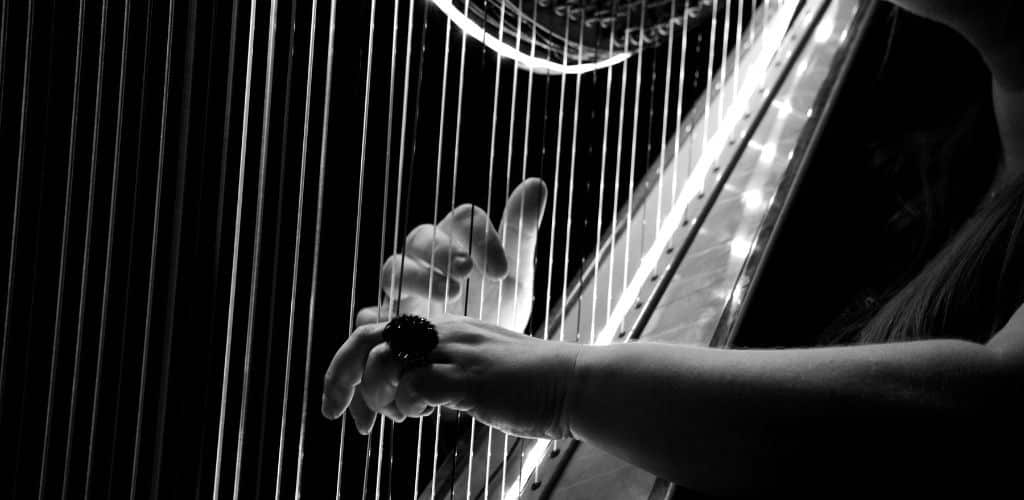
The harp is an ancient instrument played for thousands of years, with roots in Egypt and Mesopotamia.
It has been used in a variety of musical genres, from classical to folk to pop, and has become an essential symbol of Irish and Scottish culture.
The harp’s unique sound and beautiful design have made it a beloved instrument throughout history, and it continues to be played and enjoyed by musicians and music lovers worldwide.
The Role of Strings in a Harp
The strings are the heart and soul of a harp. They’re responsible for producing the melodic tones that make this instrument unique.
Harp strings can be made from various materials, including gut, nylon, and synthetic materials.
Harp String Materials:
Gut strings are made from sheep or lamb intestines and are known for their warm, rich tone.
Nylon strings are a more affordable and durable option that can produce a bright, clear sound.
Synthetic strings, such as those made from carbon fibre or other materials, are becoming increasingly popular due to their durability and consistency of sound.

The number of strings on a harp can vary depending on the type and size of the instrument. While smaller harps may have as few as 22 strings, larger concert harps can have up to 47 strings or more.
Importance of String Tension and Material
The strings’ tension and material greatly impact a harp’s sound and playability.
The tension determines the pitch and responsiveness of each string when plucked or struck. Different materials, such as nylon or gut strings, can also affect the tone and resonance of the instrument.
Maintaining proper string tension and regularly tuning your harp is essential to ensure optimal sound quality. Choosing high-quality strings made from durable materials will prolong their lifespan and enhance your playing experience.
Traditional Harps
Celtic Harps

The Celtic harp, also known as the folk harp or lever harp, typically has between 22 and 36 strings.
The number of strings can vary depending on the size and model of the harp.
Celtic harps are known for their beautiful, melodic sound and are often used in traditional Irish and Scottish music.
In terms of tuning options, Celtic harps can be tuned to different keys or scales by adjusting the tension on the strings. This is done using levers or blades that are attached to each string.
By engaging these levers, players can change the pitch of individual strings, allowing them to play in different keys without having to retune the entire instrument.
Pedal Harps
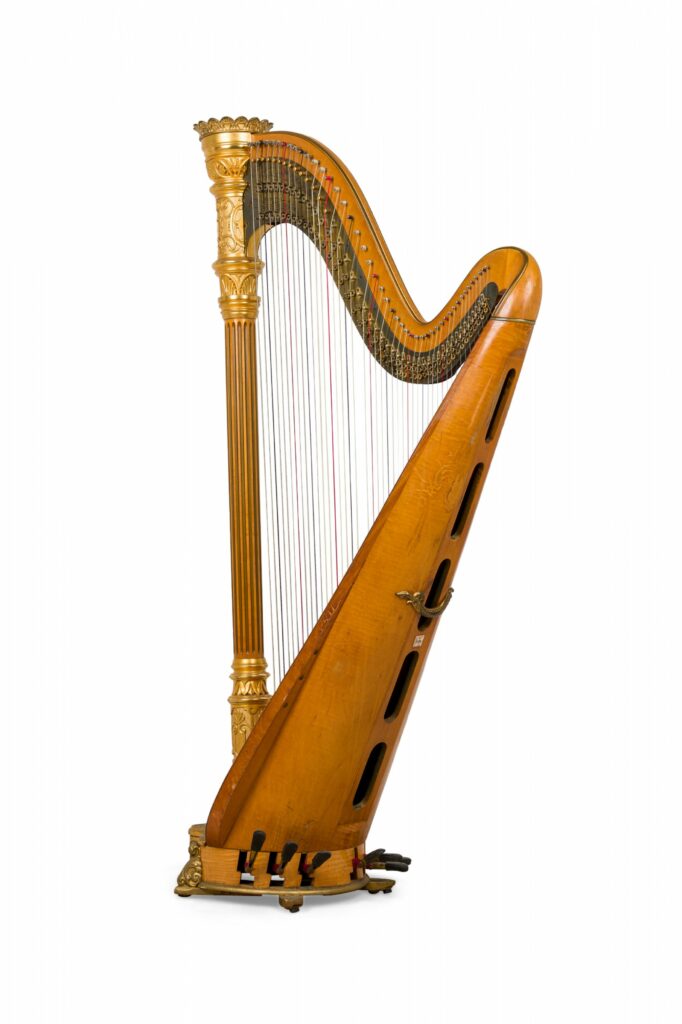
Now let’s talk about pedal harps, also known as concert harps or orchestral harps. These are the large, grand-looking harps often seen in classical music performances.
Pedal harps typically have 47 strings, although some models may have up to 47 or even more strings.
What sets pedal harps apart from other types is their unique mechanism for changing the pitch of the strings.
Pedal harps have a series of foot pedals at the instrument’s base. Each pedal corresponds to a specific note and can be set in three different positions: flat, natural, and sharp.
Contemporary Harps
Electric Harps
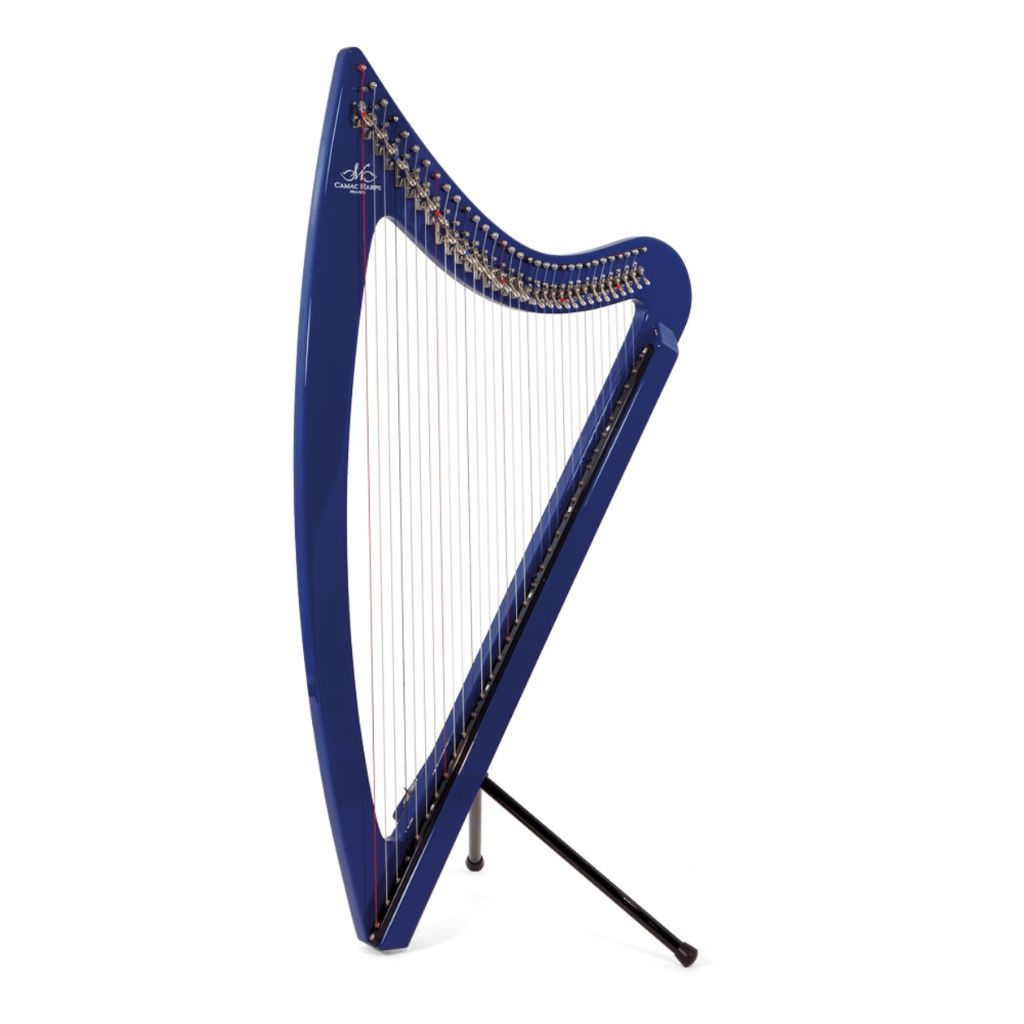
While traditional harps typically have between 47 and 47 strings, a contemporary or modern harp offers a wider range of options.
Electric harps, for example, can have anywhere from 32 to 40 strings. The number of strings on an electric harp depends on the manufacturer and the specific model.
One of the advantages of electric harps is their versatility. They can be easily amplified, allowing musicians to play in larger venues without losing sound quality.
Electric harps often feature built-in effects and MIDI capabilities, enabling players to experiment with different sounds and styles.
Harp Guitars

These unique instruments combine elements of both harps and guitars, resulting in a fascinating hybrid.
Harp guitars typically have six guitar strings, like a traditional guitar, and additional bass strings ranging from one to six.
The extra bass strings on a harp guitar provide a rich, resonant sound that adds depth to the music.
They are usually plucked or strummed separately from the guitar strings, allowing players to create intricate melodies and harmonies simultaneously.
Factors Influencing the Number of Strings

Several factors influence the number of strings on a harp. One of the main factors is the range of notes the harp needs to produce.
The more strings a harp has, the wider its range will be, allowing for a greater variety of musical compositions to be played.
Another factor is the size and weight of the instrument. Smaller lever harps are designed to be more portable and lightweight, so they often have fewer strings than larger concert pedal harps.
Also, the type of music being played also plays a role in determining the number of strings. Different genres may require different ranges and tonal qualities, which can influence the string count on a harp.
Our Recommended
Student Harps
19 String Harp
The 19 String Harp is small and compact, perfect for beginners or those who prefer a more portable instrument. It has a range of 2 octaves and is often used for folk music or as a practice instrument.
19 String Harp with Levers by Gear4music
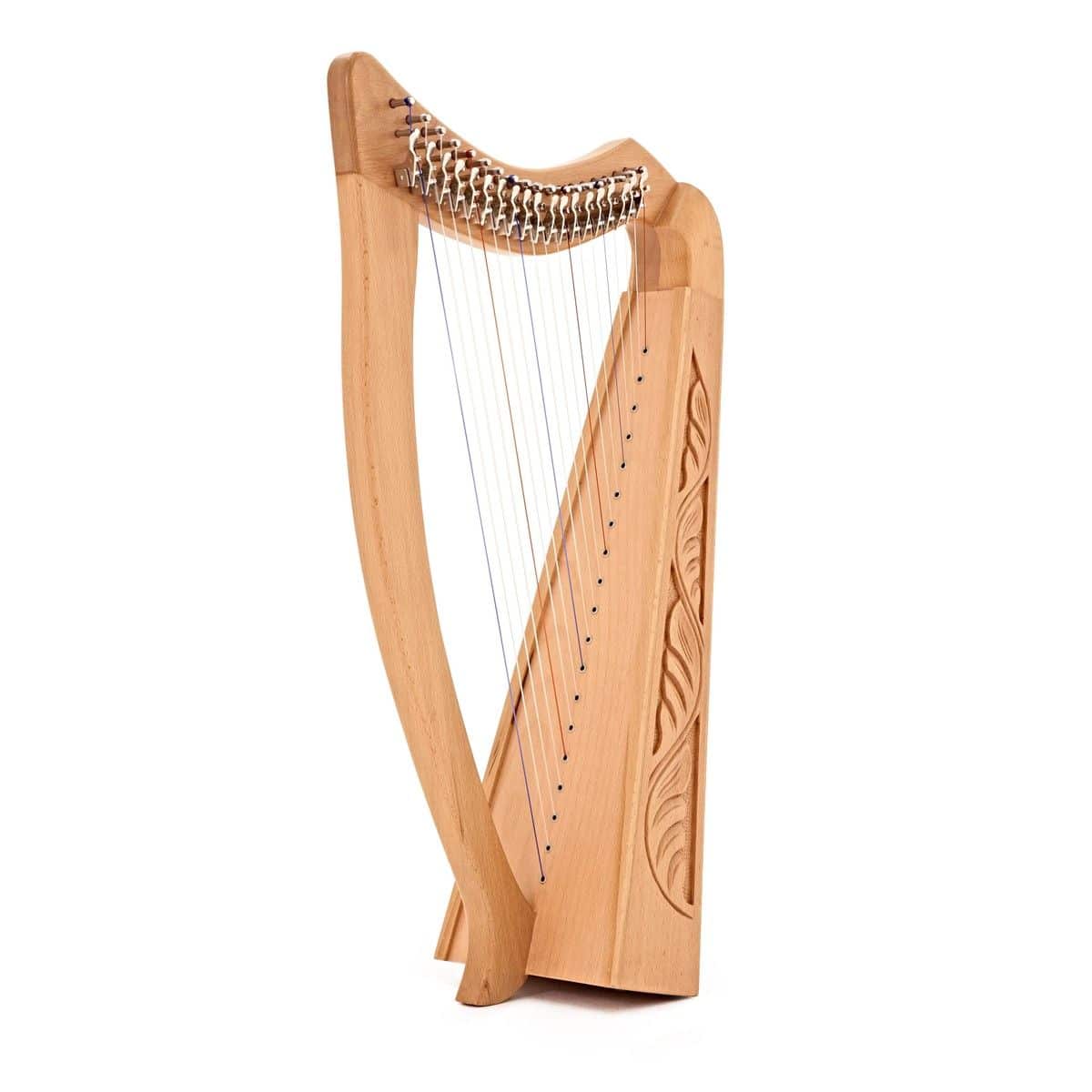
FEATURES: 19 strings for a wide range of musical possibilities
OTHER INFO: Lightweight and easily portable
- Well-crafted and visually appealing design
- Versatile instrument suitable for both beginners and experienced harpists
- Affordable option compared to larger harps
- Compact size makes it suitable for smaller spaces or travel purposes
- 19 and 22 strings are quite limiting when choosing music
When you click ‘Check Price’, you’ll see there are loads of great places to buy this item. Our personal favorite is Sweetwater for the US, and Thomann and Gear4Music for the UK & Europe.
They are the largest music retailers, with excellent customer service, competitive prices, really fast shipping, and the longest guarantees.
The professional musician who wrote this article combined many things,
from the product build, manufacturer’s reputation through to feedback
from other users, to create our famous TedScore™.
Salvi-Daphne 47 SE
The Salvi-Daphne 47 SE is a professional-grade harp with 47 strings, offering a wider range and more versatility in the music it can play. Its warm and rich sound quality makes it suitable for solo performances and ensemble playing.
Salvi-Daphne 47 SE

FEATURES: 47 SE model
OTHER INFO: Advanced technology
- High-quality materials
- Sleek and stylish design
- Powerful performance
- Excellent camera quality
- You will need an estate car if you don’t already own one
- Padded covers are not included in the price
When you click ‘Check Price’, you’ll see there are loads of great places to buy this item. Our personal favorite is Sweetwater for the US, and Thomann and Gear4Music for the UK & Europe.
They are the largest music retailers, with excellent customer service, competitive prices, really fast shipping, and the longest guarantees.
The professional musician who wrote this article combined many things,
from the product build, manufacturer’s reputation through to feedback
from other users, to create our famous TedScore™.
Lyon & Healy Silhouette
The Lyon harp is a unique and specialized instrument designed for Lyon-style music. It has a smaller body than traditional harps, with eight strings and a distinct sound that is bright and resonant. It’s often used in Celtic and folk music genres.
Lyon & Healy Silhouette

FEATURES: Comes in a range of colours: red, jet black, metallic silver, metallic blue and metallic green
OTHER INFO: Fitted with professional levers and pickup on each string
- Crafted from premium materials
- Produced by renowned manufacturers
- Offers both stationary and mobile performance options
- Includes tuning key, stand, padded covers, and body strap at no extra cost
- It’s not as versatile as a traditional lever or concert grand harps
- The harp doesn’t have a large sound when played without amplification
When you click ‘Check Price’, you’ll see there are loads of great places to buy this item. Our personal favorite is Sweetwater for the US, and Thomann and Gear4Music for the UK & Europe.
They are the largest music retailers, with excellent customer service, competitive prices, really fast shipping, and the longest guarantees.
The professional musician who wrote this article combined many things,
from the product build, manufacturer’s reputation through to feedback
from other users, to create our famous TedScore™.
How Many Strings Does A Harp Have?
Final Thoughts
So, how many strings does a harp really have? It’s important to note that the number of strings on a harp can vary depending on the specific model and the preferences of the harpist.
Some harps may have additional strings for chromatic notes or extended range.
A wide range of options are available from the small lap harp with around 22 strings to the concert grand pedal harp with up to 47 strings.
Regardless of the number of strings, harps are truly remarkable instruments.
So, whether you’re a beginner just starting your musical journey or an experienced musician looking to expand your repertoire, consider exploring the world of harps.
Their unique charm and enchanting melodies will bring joy and beauty to your life.
Before you go…
If you want more of these amazing harps, make sure to check out this next article!
Best Harp For Beginners
FAQ's
A harp with 26 or 27 strings is typically recommended for a beginner. These harps are smaller and more affordable than larger models, making them ideal for beginners learning the instrument.
While a concert harp typically has 47 strings to provide a wide range of notes and tonal possibilities for professional musicians, the number of strings on a harp can vary depending on the type of harp. A multi-course harp may have fewer strings.
A Celtic harp typically has between 22 and 36 strings, although some models may have more. The number of strings can affect the range of notes and tonal possibilities of the instrument.
While a harp can have 57 strings, this is not a standard number for most harps. Most harps have between 22 and 47 strings, although some larger models may have more.










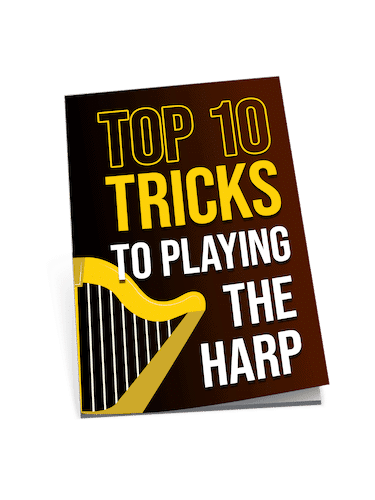
I’m particularly drawn to the section on Celtic harps. Their historical significance, coupled with their distinct sound, makes them stand out amongst traditional harps. It would be enlightening to delve deeper into their cultural impact, how they’ve evolved over centuries, and how modern crafters are keeping the tradition alive. This article scratches just the surface, sparking curiosity to explore further. Does anyone know any notable craftsmen or musicians that specialize in Celtic harps?
For modern crafters, check out Órlaith McLaren and her work. She has a fantastic repertoire, combining traditional craftsmanship with innovative design.
This rundown on student harps is invaluable! I’m always looking for resources to guide my students and their parents on instrument choices. The specific models you recommended are a great starting point to further investigate. Thank you!
got my eye on that harp guitar section, didn’t even know those were a thing. sounds pretty cool
Hey Bethan Semmens, I’ve been dabbling in music for a while and the harp has always fascinated me. I noticed you mentioned the Salvi-Daphne 47 SE as a recommended student harp. Could you delve a bit deeper into why it’s a solid choice for beginners? Also, how does it compare to the Lyon & Healy Silhouette in terms of ease of learning and sound quality? Really appreciate this article, it’s exactly the sort of guide I needed!
Plus, keep in mind the Salvi’s lighter which might be something to consider if you plan on moving it often!
SunnyVee, I’ve played on both and the Salvi-Daphne 47 has a warm, inviting tone that’s really forgiving for beginners. The Lyon & Healy has a crisper sound, bit more of a learning curve but it’s so worth it.